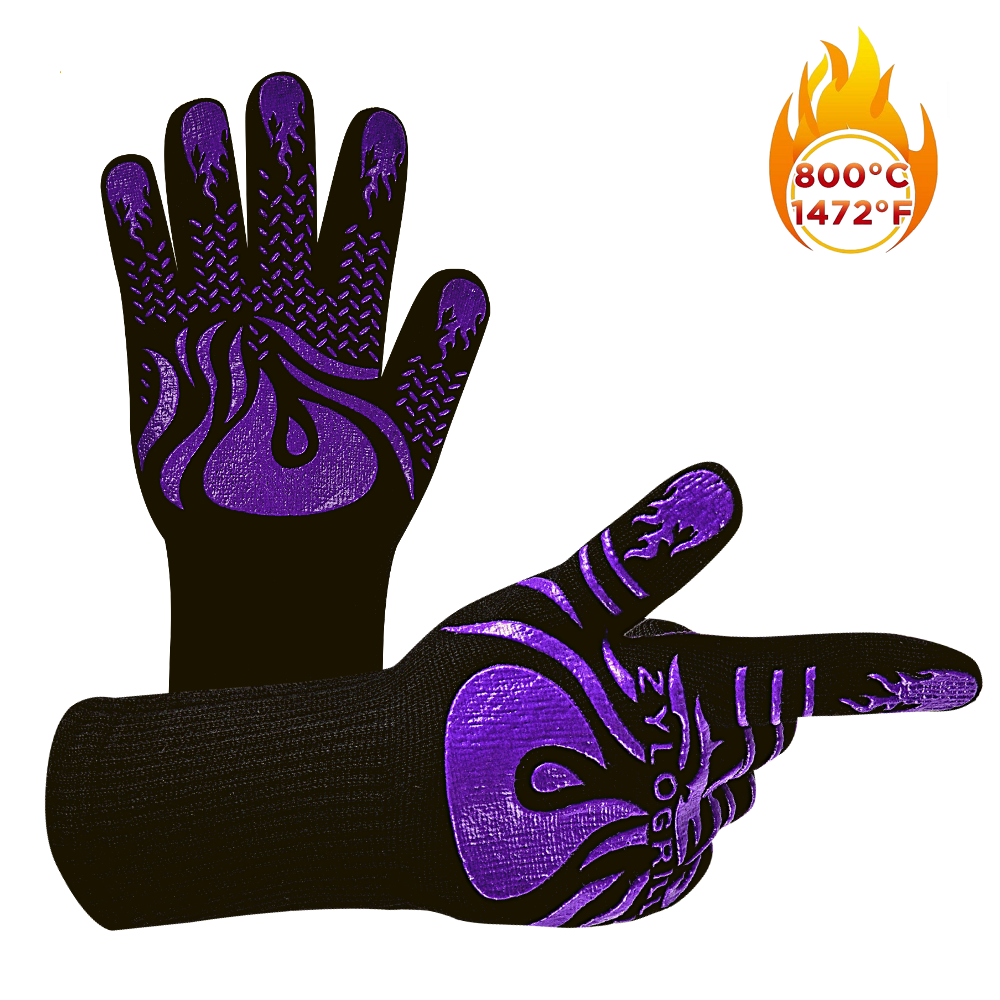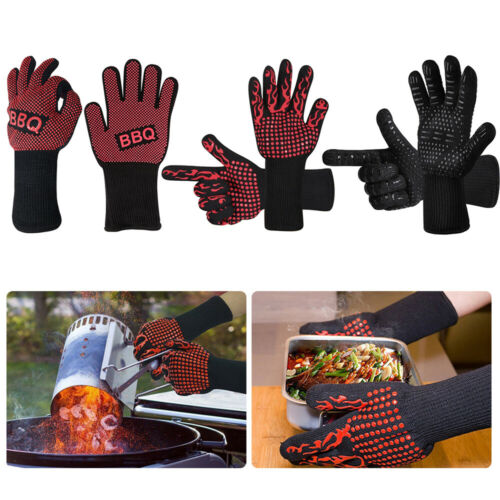-40%
Heat Resistant Gloves - 480℉ Grilling Gloves For Fireplace - Barbeque Accessor
$ 2.63
- Description
- Size Guide
Description
FREE shipping in 3 days + FREE return + money back guaranteeColor
Black
Brand
G & F Products
Outer Material
Cotton
Item Dimensions LxWxH
13 x 4 x 0.5 inches
Product Care Instructions
Cold wash air dry
Fill Material
Cotton
About this item
USE YOUR HANDS FREELY: Now use your hand freely while BBQing and Cooking. These bbq grilling gloves are very flexible in use that you can move your fingers easily.
NO BURNT HANDS: Don't worry now if you have to hold baking pan from oven to table. These gloves for cooking works perfect.
SAY BYE TO POT HOLDERS AND TOWELS: Don't worry about pan would get slipped from your hand by using any towel, these gloves provides perfect grip your hands.
PERFECT FOR INDOOR AND OUTDOOR USE: These heated gloves are for all your indoor kitchen appliances use and outdoor use. Ideal with dealing with oven or BBQ.
100% MONEY BACK : These gloves come with 30 days money back . So if you feel at any point these doesn't fit your need you can return them with no questioned asked.
From the manufacturer
Detail Look - Close up
What's made of?
Outer Shell: DuPont Nomex Heat Resistant Fiber
Made in USA.
Inner liner: 100% Cotton
Coating: High Heat Silicone Block
Silicone Block coating
Food Grade Food Contact Safe
High Heat Resistant level
Black Color for easy cleaning
One Size Fits All
Gloves is stretchable
Gloves is Reversible (Left or Right)
Why we need Heat Resistant Gloves?
Why we need Heat Resistant Gloves?
Wear gloves when and where a reasonable chance exists of your hands contacting something hot enough to cause a burn. The hazard assessment should indicate cases where gloves are required. There are some cases such as glassblowing, where the dexterity required cannot be achieved wearing heavy gloves, but the properties of the materials permit handling them without injury.
check for flaws, tears, holes. The gloves should be a comfortable fit, but not so loose that they fall off. When Removing gloves do not use your mouth to pull off gloves by the fingers. Avoid gripping glove by an area that has just been in contact with a hot object while you are removing it. One acceptable method is to partially remove one glove by pulling on the fingers, and with the fingers in the palm of the partially removed glove pull off the other glove by the fingers. Then the partially removed glove may be shaken from the hand. An alternative is simply to wait for the gloves to cool before removing them.
Care and Maintenance
Care and Maintenance
All gloves must be inspected before every use, for possible holes, tears, weak areas. Reusable gloves should be cleaned after each use if necessary, and stored so that they may dry inside and out. If your hands sweat, it is prudent to wear a light disposable under reusable gloves to prevent their inside from becoming damp. Most gloves can be cleaned with soap and water, but it is best to follow the manufacturer's instructions if available. The useful life of reusable gloves will vary drastically depending on the frequency of use, the kind of use, and the conditions of cleaning and storage. Used gloves can be disposed of as regular trash unless they have been contaminated with some hazardous material.
What is necessary and its limitation
What is necessary and its limitation
It is
necessary
that the gloves or mitts you choose are adequate to protect you from the temperature of the items you may touch. Keep in mind that most gloves are intended for contact with heated objects for a
short
time. Fabric gloves and oven mitts provide short term protection at up to 200oC. Kevlar knit work gloves give similar protection but are less bulky. Kevlar PBI (Polybenzimidazole) gloves are useful at temperatures up to 900oC.
Limitation:
Gloves will not allow contact with a hot object indefinitely. Contact with objects above the maximum temperature limit for the glove will very quickly damage the glove, and possibly cause a significant burn. Some types of gloves may catch fire if subjected to a direct flame, or an object well above the temperature limit for the glove. The gloves intended for use at very high temperatures are also very expensive. There are some operations where the dexterity required cannot be achieved with gloves rated for the temperatures involved.














